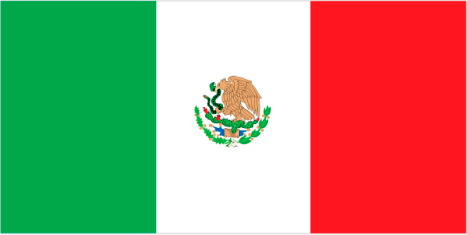To help inspire or plan your trip to Mexico, some of its major attractions
for travellers are shown below, including some of the best natural, historical, cultural and adventure sites in the country.
These include all of UNESCO World Heritage Sites for Mexico which represent the best
of the world's cultural and natural heritage.
Click on the icons below to focus on specific types of features
(click again to return to all).
|
|
|
|
|
|
|
|
|
|
|
|
 |
|---|---|---|---|---|---|---|---|---|---|---|---|
| Natural | History | Wildlife | Trekking | Cities | Religious Monument | Boat Journey | Rail Journey | Diving | Cultural | Adrenaline | UNESCO WHS |
Central Mexico - Religious Monuments
| Historic Town of Guanajuato | |
|---|---|
Guanajuato was founded in the 16th century as a base from which to mine the rich silver deposits nearby. It became the world's largest silver extracting centre in the 18th century and the prosperity of the town was evidenced in the town's beautiful Baroque architecture. The town grew spontaneously with the development of the mines, so lacks the standard grid pattern of Spanish colonial towns. The town's historic centre is filled with beautiful plazas and winding alleys, home to grandiose mansions and impressive churches such as La Compañía and La Valenciana, some of the best examples of Baroque architecture in Latin America. The legacy of the mines is seen in the town's subterranean streets and the 'Boca del Inferno' mineshaft which descends 600 metres. UNESCO World Heritage Site: Historic Town of Guanajuato and Adjacent Mines | |
| Historic Town of San Miguel de Allende | |
|---|---|
The town of San Miguel was first established in the 16th century and reached its height in the 18th century with the construction of many outstanding religious and secular buildings in the Mexican Baroque style. The 18th century Jesuit sanctuary situated 14km outside of the town is also a masterpiece of Baroque architecture and contains excellent oil paintings by Rodriguez Juárez and mural paintings by Miguel Antonio Martínez de Pocasangre. The town's location meant it was a melting pot where Spaniards, Creoles and Amerindians exchanged cultural influences. It was also the birthplace of General Ignacio Allende and renamed San Miguel de Allende in his honour. UNESCO World Heritage Site: Protective town of San Miguel and the Sanctuary of Jesús Nazareno de Atotonilco | |
| Historic Town of Zacatecas | |
|---|---|
Zacatecas was founded by the Spanish in 1546 after the discovery of a rich silver lode and gained in prosperity over the following centuries. The town is located in a dramatic setting on the steep slopes of a narrow valley and is renowned for its historic buildings. The 18th century cathedral is a richly decorated Baroque structure with both European and indigenous decorative elements while the Jesuit Church of Santo Domingo has a more understated beauty and now hosts a Fine Arts Museum. UNESCO World Heritage Site: Historic Centre of Zacatecas | |
| Earliest 16th-Century Monasteries on the Slopes of Popocatepetl | |
|---|---|
These 14 monasteries were some of the 300 or so built in the 16th century by Spanish missionaries charged with converting the native population to Christianity. The monasteries were all built to a similar plan and served as models for missions established throughout the region. UNESCO World Heritage Site: Earliest th-Century Monasteries on the Slopes of Popocatepetl | |
| Franciscan Missions in the Sierra Gorda of Querétaro | |
|---|---|
Five Franciscan missions were built in the mid-18th century in the Sierra Gorda as part of the last phase of the conversion to Christianity of the interior of Mexico. The missions included the rural settlements of the native population that grew around them, while the richly decorated church facades represent joint creative efforts between the missionaries and the native Indios. UNESCO World Heritage Site: Franciscan Missions in the Sierra Gorda of Querétaro | |
| Historic Town of Oaxaca | |
|---|---|
The city of Oaxaca is an attractive, laid back colonial town that has excellent shopping opportunities for Mexican handicrafts and is a base for exploring the nearby Zapotec ruins at Monte Alban. The historic part of the city is centred around the Zocalo, or main plaza, a pedestrianised area with trees and colonnaded buildings containing many bars and restaurants, providing a lively atmosphere at night with street vendors, entertainers and musicians. There are a number of impressive churches in the town such as the cathedral, the church of La Soledad and the church of Santo Domingo. UNESCO World Heritage Site: Historic Centre of Oaxaca and Archaeological Site of Monte Albán | |





